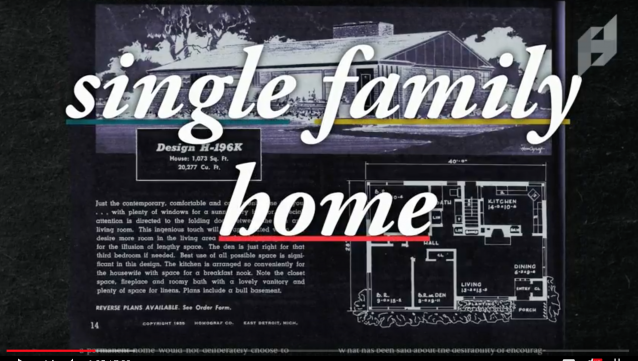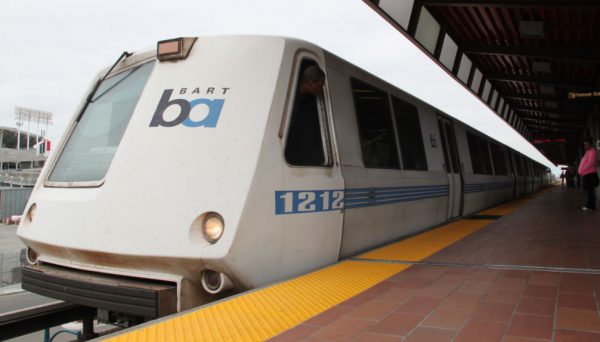Physical Address
304 North Cardinal St.
Dorchester Center, MA 02124
Physical Address
304 North Cardinal St.
Dorchester Center, MA 02124

If you type “housing crisis” into Google search, “2008” is no longer the first result. The subprime mortgage crisis that toppled the global economy just a decade ago has been supplanted on Google trends by “housing crisis 2018.” This time, the crisis isn’t an overabundance of housing; it’s a chronic housing shortage. But economist Kevin Erdmann argues that the 2018 housing crisis is just the second act of the same tragedy. With local governments issuing fewer building permits and millennials beginning to buy their first homes, millions of Americans struggle to find affordable housing in 2018. The crisis is arguably the worst in California, where about one-third of all city-dwellers cannot afford local rents in every city in the state, San Diego to Sacramento. Economists and policy experts that study housing largely agree that the chronic unaffordability of American housing stems from persistent shortages in the quantity of housing supplied relative to the quantity demanded. Most housing scholars agree that “not in my back yard” (NIMBY) zoning laws are to blame. In many areas, NIMBY zoning laws have prevented developers from building multifamily housing in residential areas or forced developers to adhere to mandated minimum lot sizes. What resemblance, then, does our world of NIMBY-induced housing shortages have to do with the pre-2008 world with fast-and-loose credit policies [pdf] and overbuilt McMansions? That pre-2008 world, Erdmann argues, doesn’t really exist. [pdf] The traditional loose credit story is an easy one to tell––it appeals to populist sentiments (by demonizing rich bankers) and exudes the moral weight of an anti-capitalist parable about greed and gluttony. It makes for a great movie, “The Big Short.”And, to its credit, the traditional credit story even seems to explain much of the financial bedlam of 2008. Banks and investors placed too much confidence in risky mortgage-backed assets, […]
A headline in the Boston Globe screams: “Boston’s new luxury towers appear to house few local residents.” The headline is based on a report by the leftist Institute for Policy Studies, which claims that in twelve Boston condo buildings, “64 percent do not claim a residential exemption, a clear indication that the condo owners are not using their units as their primary residence.”* The report accordingly concludes that these buildings do not “address Boston’s acute affordable housing crisis.” This seems to be another version of the common “foreign buyers” argument: that new housing does not hold down rents, because it will all be bought up by rich foreigners who will let the units sit unoccupied forever. Although the report does not explicitly endorse restrictive zoning, it does urge the city to require new residential buildings to be carbon-neutral- a rule that might make residential construction more difficult. But this inference would be wrong. If you own a condominium, you have three choices: (1) to live in it; (2) to sit on it and lose money on your mortgage; or (3) to rent it out. Obviously, you make the most money through choice (3)- renting out the condo. So even a condo owner who does not choose option (1) has a strong incentive to adopt choice (3). Thus, it seems likely that at least some, if not all, of the condos will be rented out, thus increasing rather than decreasing regional housing supply, which in turn will have a positive effect on housing prices. *The residential exemption saves Boston homeowners up to $2500 per year on their tax bill. I would think that at least some owner-occupants are unaware of or forget to file for this exemption- but since I have no idea how common this is, I am reluctant […]

It’s an understatement to say that zoning is a dry subject. But in a new video for the Institute for Humane Studies, Josh Oldham and Professor Sanford Ikeda (a regular contributor to this blog) manage to breath new life into this subject, accessibly explaining how zoning has transformed America’s cities. From housing affordability to mobility to economic and racial segregation to the Jacobs-Moses battle, they hit all the key notes in this succinct new video. If you need a go-to explainer video for the curious new urbanists, this is the one. Enjoy!

On August 23rd, a California assembly bill aimed at increasing transit-oriented development, like housing, was passed by the state senate, confirmed by the assembly, and headed to Governor Jerry Brown’s desk for signing. The bill, AB 2923, specifically targets the San Francisco Bay Area—making it easier than ever for the Bay Area Rapid Transit (BART) to build housing on the land it owns around its transit stations. Previously, housing developments on BART-owned land were still subject to local zoning rules, pushing projects through local processes to be approved before building began. This local control led to many delays, and, as a result, housing denials in the midst of an ongoing housing shortage—on that repeatedly spurs news headlines decrying four-plus hour super commutes, median home prices over $1 million, and neighborhoods blocking affordable housing. State bills like AB 2923 are a response to these reports, as well as the local control that led to them. If passed, AB 2923 and other bills like it, will bypass local control’s draconian rules to allow more housing to be built and ease the housing shortage. Under current law, land owned by BART is often subject to discretionary review in Bay Area cities. This forces BART to become de facto experts in every municipality zoning code, an impossible task that would take away from their focus on improving their transit system. Even attempting to master the zoning codes of every municipality takes time. Ultimately, this causes delays in building housing that’s so sorely needed. But this could easily be avoided if BART could establish their own zoning rules under AB 2923. Housing and transit is intrinsically linked and, just like suburban home developers build the roads to best suit their development, urban transit authorities like BART must utilize their capacity to build the homes best […]
A recent headline in the Forbes blog screams: “Additional Housing Won’t Make City More Affordable, Says Fed Study.” This blog post cites a Federal Reserve Study showing that adding 5 percent more housing in the most desirable urban neighborhoods would lower rents by only 0.5 percent. But if you read the study more carefully, it doesn’t stand for what the headline says it stands for. First of all, it refers only to increasing housing supply in the most expensive neighborhoods. But housing markets are citywide- so of course if you increase housing supply in just one or two neighborhoods, you are not going to get significant rent reductions. If you raised housing supply by 5 percent everywhere, presumably you would get more than a 0.5 percent rent reduction. The study itself states: ” The papers that find large effects of regulation on house prices are not necessarily at odds with our findings in this paper, because regulations can have very large effects on the housing stock. For example, Jackson (2016) finds that an additional regulation reduces residential permits by 4 to 8 percent per year. Glaeser and Ward (2009) estimate even larger effects on supply. These effects on construction can accumulate into very large changes to the housing stock, especially when these regulations are in place for many years, as is often the case.” (p. 5) In other words, the study admits that supply-limiting regulations do affect housing costs: precisely the opposite of what a careless reader might think from reading the Forbes headline. Second of all, 5 percent is not exactly a huge increase. Even the author of the Forbes blog post concedes that more aggressive supply increases might lead to more aggressive rent reductions. Third, the study assumes a zero vacancy rate (p. 13) which seems to be an assumption that […]
A pure libertarian might argue that in an ideal world, there’d be no need for government-subsidized housing for low- and moderate-income households. Nevertheless, it seems to me that in the world we actually live in, even people generally opposed to the welfare state should favor more such housing. This is so for several reasons. First, government raises the cost of housing through a wide variety of regulations- some justified (e.g. building codes necessary for safety), some not-so-justified (e.g. exclusionary zoning). These regulations, by raising the cost of housing, effectively take money from all households. And because these restrictions aren’t based on ability to pay, they are especially painful for low-income households. Public housing and similar programs, rather than being a subsidy to the undeserving poor, are merely compensation for this act of plunder. Second, even if the United States abolished zoning tomorrow, it might take decades for housing supply to increase enough to bring rents down. So in the interim, lower-income households would still be suffering from the effects of zoning, and would deserve compensation just as much as they do under the status quo. Third, even if the United States abolished zoning and similar restrictions tomorrow, public health and safety might support certain restrictions that nevertheless increase the cost of housing- for example, some basic safety protections in building codes. It seems to me that as a matter of justice, government should not be forcing people into homelessness, so government should subsidize housing in order to make up for the costs imposed by even the most legitimate regulations. Finally, even if there were no housing-related regulations at all, the cost of land would create a floor under housing costs, which means some people would be homeless without government support. So if homelessness creates harmful social externalities of any kind, […]
I found an interesting new website: EvictionLab. This website contains eviction data by city for a large number of American communities. One might think that gentrifying cities and/or high cost cities have more evictions. But interestingly, low-cost, poor cities tend to have more evictions. Nine of the ten cities with the highest eviction rates are in low-cost southern states; the tenth is Warren, Michigan. Even within states, low-cost cities tend to have higher eviction rates than more expensive, gentrifying cities. For example, Fresno has the highest eviction rate of any major city in California- 2.8 (that is, 2.8 evictions for every 100 renter households) while Los Angeles and San Francisco are below 0.5. Seattle has a lower eviction rate (0.3) than Washington’s smaller cities, Austin has a lower eviction rate than Dallas or Houston (0.98 percent as opposed to over 1.5 percent for Houston and Dallas). Miami’s 2.01 percent eviction rate, although high by national standards, is lower than that of other Florida cities such as Jacksonville (5.34) and Tampa (3). New Orleans (1.6) has a lower eviction rate than Baton Rouge and Shreveport (both of which clock in at over 4 percent). New York City is a partial exception- its 1.61 rate is higher than that of Syracuse and Yonkers; on the other hand no statistics are available for the state’s two biggest cheaper cities, Buffalo and Rochester. So what does it all mean? It seems clear that there is not a strong correlation between gentrification and eviction, or for that matter between higher-than-average housing costs and eviction. Beyond that, I’m not sure what conclusions to draw.
I recently discovered a new logical fallacy: the “Morton’s Fork” fallacy. This argument is one in which contradictory observations lead to the same conclusion. For example, if I argue that new housing near public transit is bad because it (1) spurs gentrification by bringing rich people into the neighborhood and (2) increases crime by bringing poor people into the neighborhood, I am engaging in this fallacy. Similarly, I have heard arguments that new housing is bad because it (1) brings down property values and (2) increases property values. In such situations, it is sometimes possible that one of the two claims could be true, but it is unlikely that both claims could be true.
The Bible says again and again and again to “love the stranger”. Although this phrase has been interpreted in a variety of different ways, one highly plausible interpretation of this maxim is that we should be at least somewhat hospitable to newcomers and temporary sojourners in our midst. But American land use and transportation regulations seem to be motivated by hostility to “strangers” (or, as they are more perjoratively termed, “transients”). For example, the most privileged uses in zoning are the most permanent: single-family houses and businesses tend to be the least controversial land uses, while the most transient-oriented land uses tend to be the most controversial. Owners of single-family houses try to zone out apartments because renters are “transient”, and homeowners and renters in turn may ally try to zone out hotels and other forms of short-term rental because the users of these services are even more ‘transient” than renters. Street design often seems hostile to transients as well; a visitor to a city is least likely to be disoriented in a place where one can guess a place’s location based on an address. For example, if you are going to 1125 M Street, SW, in Washington, DC you know that your destination is near the corner of 11th and M Streets. Other gridded areas are a little less legible, but even so you can somewhat guess where you are going if you know a street name or two. By contrast, newer suburbs often tend to be much less legible to visitors: for example, in suburban Atlanta, there is no street grid and the proliferation of cul-de-sacs makes navigation confusing for visitors.

In most of my discussions of Houston here on the blog, I have always been quick to hedge that the city still subsidizes a system of quasi-private deed restrictions that control land use and that this is a bad thing. After reading Bernard Siegan’s sleeper market urbanist classic, “Land Use Without Zoning,” I am less sure of this position. Toward this end, I’d like to argue a somewhat contrarian case: subsidizing private deed restrictions, as is the case in Houston, is a good idea insomuch as it defrays resident demand for more restrictive citywide land-use controls. For those of you who haven’t read my last four or five wonky blog posts on land-use regulations in Houston (what else could you possibly be doing?), here is a quick refresher. Houston doesn’t have conventional Euclidean zoning. Residents voted it down three times. However, Houston does have standard subdivision and setback controls, which serve to reduce densities. The city also enforces high minimum parking requirements outside of downtown. On top of these standard land-use regulations, the city heavily relies on private deed restrictions. Also known as restrictive covenants, these are essentially legal agreements among neighbors about how they can and cannot use their property, often set up by a developer and signed onto as a condition for buying a home in a particular neighborhood. In most cities, deed restrictions cover superfluous lifestyle preferences not already covered by zoning, including lawn maintenance and permitted architectural styles. In Houston, however, these perform most of the functions normally covered by zoning, regulating issues such as permissible land uses, minimum lot sizes, and densities. Houston’s deed restrictions are also different in that they are heavily subsidized by the city. In most cities, deed restrictions are overseen and enforced by parties to a deed, typically organized as a […]